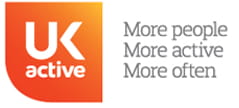Hockey has been continuously in the spotlight ever since the Rio Olympics. The Great Britain women’s hockey team won gold in Rio, becoming the first team sport to win gold at the Olympics since the men’s hockey team in 1988.
The result has been an upsurge in the number of people – children and adults – taking up the sport and, as a recent visit to Cambridge by Helen Richardson-Walsh and team captain Kate Richardson Walsh proved, interest in hockey in Cambridge is at an all-time high.
Hockey and its tough training regime
During a question and answer session at The Perse School, Kate Richardson-Walsh said that she did some form of physical training every day for up to four hours a day. She said that she went to bed hurting just about every night and she kept up this regime for 17 years.
While the average club player does not put these sorts of efforts into their training, there is no doubt that hockey is a very physically demanding sport. It involves a whole range of physical abilities – speed, strength, flexibility and endurance – so conditioning yourself to be a hockey player involves a varied training programme, much of which can be done in the gym.
Fitness ideas for hockey players
Here, we have outlined some of the key fitness elements that are central to hockey and added some ideas for incorporating them into your gym training session.
With hockey players averaging between 8-11 kilometres during a game, then some aerobic and anaerobic training is necessary. However, as anyone who has played or watched hockey will know, this distance is broken down into into walking, jogging, striding and sprinting. This is easily replicated on a treadmill or stationary bike.
Warm-up with five minute gentle jog/pedal
Increase the pace until you are going at 60% of your maximum effort (talking should be slightly challenging). (Keep this going for 10 minutes).
Drop to a walk/gentle pedal. (1 minute).
Increase the pace to 60% of your maximum effort (2 minutes).
Increase the pace to 80% of your maximum effort (30 seconds).
Drop the pace to 40% (1 minute).
Increase the pace to 90% of your maximum effort (30 seconds)
Drop the pace to 40% (1 minute).
Repeat the 90%/40% for another five repetitions.
Run/pedal at 60% of your maximum effort (5 minutes)
Sprint flat-out (30 seconds).
Repeat the 100%/60% for two more repetitions.
Drop the effort to 40% (2 minutes)
Drop the effort to 30% (2 minutes)
Walk/slow pedal for five minutes.
Hitting, pushing and flicking the ball takes power and flexibility in the shoulders and upper body. Try these exercises for developing strength in the upper body.
10 x Explosive push ups – in a lowered push-up position, launch your body upwards so both your arms leave the floor. If possible clap your hands before you land back in push up position.
Shoulder press – with a dumbbell in each hand, raise the weights to in front of your shoulders. Push upwards until your arms are almost fully extended, lower to the shoulders. Repeat x 10
Pull-ups – hanging from a bar, pull yourself up until your chin is level with the bar. Slowly and under control, lower back to start position. Do this 10 times, taking breaks whenever needed.
Bulgarian bag swing. Grasping the bag by each end, lower your legs to a squatting position and then swing the bag under control from side to side. As you get used to the movement, add a rotation from the hips so you can look over your shoulder as you swing the bag from left to right.
The legs and lower body are also hugely involved in hitting the ball. When a player strikes the ball, his or her knees are bent and the power comes through a powerful rotation from the hips up through the body.
Training the legs and lower body
10 x vertical jumps – starting in stationary position, feet shoulder distance apart, bend the knees and launch yourself as high as you can in the air. Land with soft knees.
20 x jumping lunges – with one foot forward and one back (in classic lunge position), jump and change the lead leg. Alternate lead leg for 20 reps.
20 x Deep Squat (with or without weights)
10 deadlifts – using an appropriate weighted bar, bend from the hips, keeping your back straight. Grip the bar and lift the bar to level with your thighs. Do a slight back bend before lowering the bar to the floor again – you should feel the hamstrings engage.
Repeat these four exercises three times.
Click here for information on hockey in Cambridge
For help with any sport specific training talk to our team of fitness instructors.












